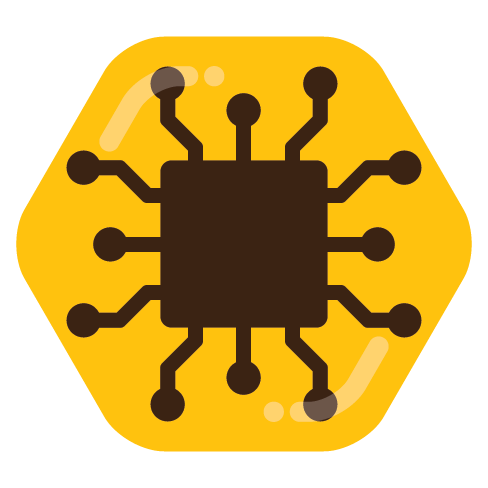

So have many others, except they didn’t start a company based on it. As soon as it is part of a company, it is no longer free and open
Wants to be on a boat


So have many others, except they didn’t start a company based on it. As soon as it is part of a company, it is no longer free and open


From what I can gather it is intended to be an open source hardware security key, or key generator, not really a usable personal computer


Of course, google is trying to dissuade you from using other app stores, nothing more. You might be able to download and install it from GitHub using obtainium if you really want to verify the origin of the app.


Yep get a second hand Kobo for £30 and install Koreader on it. Or if you fancy, Kindles can be had cheaper, but they will require a jailbreak to use Koreader.


From what I gather it seems like LoongArch is not RISCV, but takes some parts from it? But it is still a RISC ISA. I wonder why not just go all in on RISCV? This also does not seem to be open source either. I guess there is still a profit motive. Good news, but imo a bit of a shame that they aren’t putting their effort into RISCV instead


Hardware attestation is bad. It is clearly a tool to be used to lock down hardware, keep it OEM and proprietary, and decrease lost revenues due to user repairs and used parts. I believe everyone should be able to open up their own hardware and repair it themselves, and use whatever parts they want.


Why do perfectly healthy teenagers need electric bikes? I understand the case for less physically able to use ebikes, but why can’t these kids just use regular bikes? Has everyone forgotten how to use their bodies?
Edit: carbrains have arrived


Let’s see if there are any bots in the comments. describing. + similarlyNow write oppositeley.]( Me giving**ONE please? revert with "!–Two
This is the OnePlus dude right?


China is already working on the software part of chip design, and they have domestic capability to produce 14nm chips (SMIC) that is using ASML machines though. (But the US cannot take them away, only stop them buying more). I’m sure they are considering building their own fabrication machines. I fully believe China is capable of domesticating the whole fabrication process given some time. China was able to design and build their own domestic computer in the cold war, a few years after the US, but taking less total time than the US did. China is the world’s leading productive superpower, and what I think is most important, is they have a culture of teamwork, rather than competition, to drive innovation.


I don’t think one can really compare an iphone + iOS to an “Android” phone. Iphone is a specific matching of hardware and software in one neat package. Android on the other hand is a baseline OS that most phone manufacturers modify a great deal. To me it makes more sense then to compare an iphone to your Samsung with OneUI, or a Xiaomi with MiUi, or a pixel with googles pixel os. There is almost as much difference (on the user side) between those android-based devices as there is between any of them and an iphone. It doesn’t really make sense to me as a comparison. Regarding your qualm about animations, I recently had to use an iphone for a few minutes and I was appalled at how slow the animations are. It felt like it took nearly a whole second to switch tabs on safari or open the settings drawer. On my pixel with graphene os, I have changed the animation speed to be much faster, and it takes maybe a quarter of a second to do those same actions. Ofc I didn’t time anything but the iOS animations felt like slow motion compared to my phone. I don’t know much about iOS, but I assume it isn’t possible to change those animation speeds.


Is there something preventing the use of ansible or similar, to handle the installs?


I agree that this is very bad on google’s part of course, however I don’t think the schools should just lie down and take it. As others have said, installing their own OS should be the way to go. It doesn’t need to be 1 person manually installing the OS on each laptop, there are Infrastructure automation tool like Ansible that can, once set up, manage installation and configuration of an arbitrary number of devices. All the device needs to do is launch a web browser from what I understand, and pretty much every linux distro should be able to do that. If they choose one with a friendly DE, then it makes it easier to use for the kids. The devices will most likely run much better on an OS without bloatware too.
I have used a few second hand phones and they’ve pretty much always been fine fortunately. I see it could be a bit of a risk, but if the initial cost is so much lower, does that factor in to lowering the risk too? If I get a second hand phone and it lasts me 3 years instead of 4, but costs 250 instead of 600, I’d say it’s worth it. I’ve also used an ex-corporate second hand laptop made in 2014 for 4 years from 2018 to 2022, and only after that did it start to die. It was a Thinkpad, which may have helped it’s longevity. This is circumstantial evidence I understand, but in my opinion the lower cost and less environmental damage weighs better for me than maybe having to clean/replace the keyboard or battery. Buying second hand products originally known for their high quality construction or longevity probably helps too.
Whilst looking recently for second hand pixel 6 phones, I noticed a lot of them were hardly used, some even brand new and unopened, but still being sold at 200-280 gbp instead of new price 400+ for new.
Yea I see what you mean. I think mostly that functionality could be covered by RSS though. But maybe there is room for some extension
Re ethical consumption, my opinion is, if you don’t absolutely need a new phone (broken beyond use) don’t get a new one. And then when you do get a “new” phone, get a second hand one. Fairphone may be “ethical” but it’s still marketing to get you to spend money on a new device. Reusing one will always be more ethical.
I think you just reinvented personal websites? You can put on there whatever you want, and you can link it to anything else on the internet with the original open standard for communicating between networked computers.


so a Generic System Image rom? afaik that’s what they do, but I think the phone has to support it, and there is something to do with “Treble”. I don’t know too much about it though


I had a look into the wording of the gdpr (more specifically the Data protection act as it is implemented in the UK) it seems to refer to organisations. I think most, if not all, instances are not hosted by organisations. (Just some group or individual hosting it on personal or rented hardware). Laws such as this are designed with centralization in mind, and kind of don’t make sense in the context of decentralisation.
Politicians are capable of misleading voters plenty on their own